IN FOCUS: No new petrol-only cars in Singapore from 2030 – what infrastructure needs to change?
As Singapore pushes towards an entirely cleaner-energy vehicle population by 2040, what will happen to petrol stations and will there be enough EV chargers?
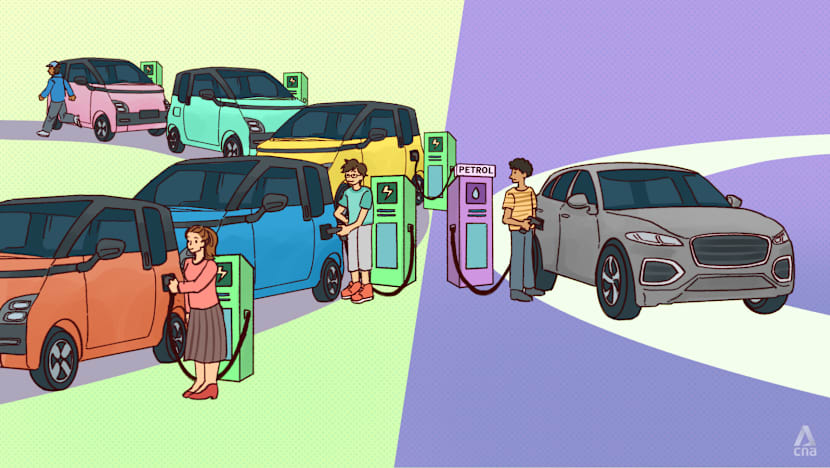
Singapore will stop registering new petrol cars by 2030. What will happen to petrol stations and will there be enough EV chargers? (Illustration: CNA/Clara Ho)

This audio is generated by an AI tool.
SINGAPORE: Car enthusiast Leong Yi Chong bought an internal combustion engine (ICE) car in February and hopes to extend its Certificate of Entitlement beyond the 10 years, and past 2040.
He thinks that being behind the wheel of an ICE car is a “raw, visceral” experience that driving an electric vehicle (EV) cannot replicate.
But while the 31-year-old is enjoying his ride on his second-hand 2006 Subaru Impreza WRX, he is concerned that his time with the vehicle may be cut short.
This is because plans have been made by the authorities for a total transition to cleaner-energy vehicles, such as EVs and hybrids, and a phasing out of all ICE vehicles, such as Mr Leong’s.
To this end, the commercial recruiter thinks there may be several hurdles standing in the way of these plans, and is hoping against hope that he can still drive his car post-2040.
For one, he thinks that car enthusiasts like himself will be resistant to the push towards EVs.
“Classic and performance cars form part of car culture, and EVs don’t replace that emotional connection,” he said.
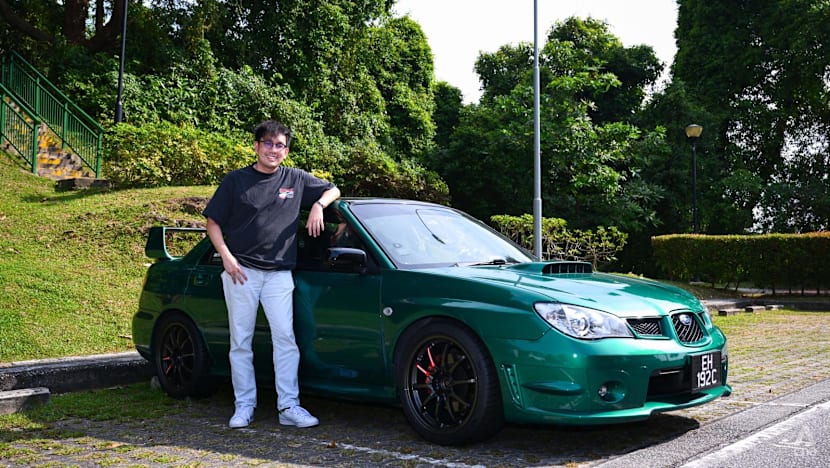
And he believes there is good reason ICE cars will still be sought beyond 2030, when all new car registrations will have to be of cleaner-energy models.
He thinks that charging infrastructure may not expand quickly enough, and that certain vehicles – particularly emergency vehicles – may need to remain as ICE variants because of their superior range, faster refuelling and greater durability.
“I feel like there will always be a need for ICE vehicles, even in a cleaner environment with EVs.”
But regardless of the sentiment towards petrol cars, the numbers show that EVs are becoming more popular among Singapore motorists.
The number of EVs in Singapore has grown from 26,200 at the end of last year to 39,800 so far this year – a 52 per cent jump.
So far this year, EVs have made up about 41 per cent of new car registrations.
But amid Singapore’s strong push for a cleaner-energy vehicle population by 2040, some motorists like Mr Leong have questions on how infrastructure will change.
What will happen to petrol stations as ICE vehicles are phased out? Can EV charging infrastructure keep up with the growing demand as the EV population grows?
There is also the existential issue of car mechanics and workshops, most of whom service and repair ICE vehicles. Has this become a sunset industry as well, given the push for electrification?
Timeline
Under the Singapore Green Plan 2030, which was launched in 2021, the targets for the move towards cleaner-energy vehicles are:
By 2025:
- All new registrations of diesel cars and taxis to cease
- All HDB towns to be Electric Vehicle (EV) ready with chargers at all HDB carparks
By 2030:
- All new car and taxi registrations to be of cleaner-energy models
- Deploy 60,000 EV charging points nationwide
By 2040:
- All vehicles to run on cleaner energy
WHAT WILL HAPPEN TO PETROL STATIONS?
With the shift to a cleaner-energy fleet, petrol stations in Singapore - at least in their current form - will see a decline in the next 15 years, said experts.
Professor Lawrence Loh from the National University of Singapore (NUS) said that the over 180 petrol stations in Singapore are “at a crossroads now”.
According to an article published last year by the Boston Consulting Group, up to one quarter of petrol station sites may become unprofitable and need to close by 2035, in places where “EVs dominate”.
And while enhanced convenience store offerings at petrol stations could draw customers who are not visiting to refuel, the consulting firm still expects total profits for the stations to decline by 30 per cent by 2035 in EV-prevalent places.
“If one day, many (petrol station sites) are given up by the (petrol) companies, there might be certain thinking about putting them to more optimal use, the same way we are looking at converting land like golf courses to better use,” said Prof Loh, who is director at the Centre for Governance and Sustainability of NUS Business School.
But petrol stations are certainly not going to be a thing of the past anytime soon.
CNA previously reported that petrol stations have been evolving over the years to offer a more diverse range of non-fuel retail services to enhance convenience and attract more customers amid Singapore’s EV push.
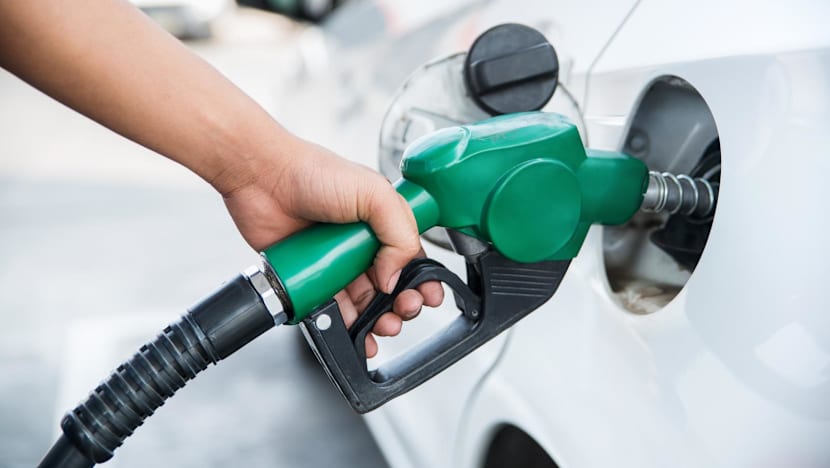
The next natural question would then be – could the petrol stations be converted to fast-charging stations instead?
The expectation that all of them can be converted is unrealistic, said Prof Loh.
For one, there will be a change in how people charge their vehicles.
“Slowly, we will see a decentralisation of charging (where) progressively more sites are made available in residences, including public and private housing and work places,” he said.
This would, in turn, moderate demand for centralised charging facilities, he said.
Transport economist Walter Theseira said that the fast charging “petrol station” model is unlikely to “ever make much sense in Singapore”.
This is because it is cheaper for users to have the vast majority of their charging done using slow charging, which is supplied at the EV owner's home car park and malls, among other places.
“Thus, with widespread slow charging, fast charging 'petrol stations' will simply be uneconomical for most users,” said Assoc Prof Theseira, who is from the Singapore University of Social Sciences' School of Business.
Instead, it will be more applicable to commercial operators, such as private-hire drivers, who need to charge during the day because they may drive more than their battery capacity each day.
The conversion of the petrol station sites to other uses will also be challenging, according to one environmental expert.
Conservation ecologist Rachel Oh said that the process of decommissioning a petrol station involves a site assessment and pollution survey, followed by the removal of underground tanks and pipes, excavation of contaminated soil, and the soil’s subsequent treatment.
An incomplete decontamination of the land will eventually have “significantly adverse impacts on our health and economy”, said Dr Oh, who is a research assistant professor at the NUS Department of Geography.
For instance, toxic compounds can leach onto the soil and groundwater or even into the air in vapour form, and long-term exposure can lead to increased risk of chronic health conditions, such as respiratory and cardiovascular diseases.
If residual fuels are not properly managed, they can also become fire or explosion hazards.
“Contaminated sites (can) become costly and time-intensive barriers to redevelopment, as complex remediation is required before land can be safely repurposed for housing, community facilities or other uses,” said Dr Oh.
Responding to queries from CNA, an Urban Redevelopment Authority (URA) spokesperson said factors such as the growing adoption of EVs are taken into consideration when studying the adaptation of petrol station sites for alternative use.
“For example, many petrol station operators have proactively responded to EV trends and deployed EV chargers to provide charging services to EVs,” said the spokesperson.
URA added that relevant agencies will provide guidance on the necessary measures to ensure that petrol station sites are fit for their intended use.
CAN THE POWER GRID COPE?
With the target of 60,000 charging points deployed islandwide by 2030, Singapore is nearly halfway there, with 24,000 charging points installed as of September, according to the Land Transport Authority (LTA).
But with the 60,000 target being over two times the latest figure, how will Singapore’s energy grid hold up?
Responding to CNA's queries, LTA and the Energy Market Authority (EMA) said that studies are currently underway to determine the impact of increased EV adoption and the installation of more chargers on Singapore’s energy infrastructure.
An “infrastructure augmentation” will be phased over the next 20 years and take into account EV charger technology improvements, and insights on charging behaviour gathered through early EV deployment.
Professor Dipti Srinivasan, who heads the Centre for Green Energy Management and Smart Grid at NUS, said that the 60,000 target will likely not be the final target, and there would be even more demand for chargers heading into 2040 as all cars become cleaner-energy variants.
“The full electrification of transportation will inevitably raise electricity demand, with the biggest challenge being the surge in peak load if many EV owners plug in simultaneously after work,” she said.
She added that addressing this issue requires more than just expanding the generation of energy.
“It calls for smart charging technologies that stagger charging rates and times through intelligent algorithms, allowing the grid to safely oversubscribe infrastructure while flattening demand peaks,” said Prof Srinivasan.
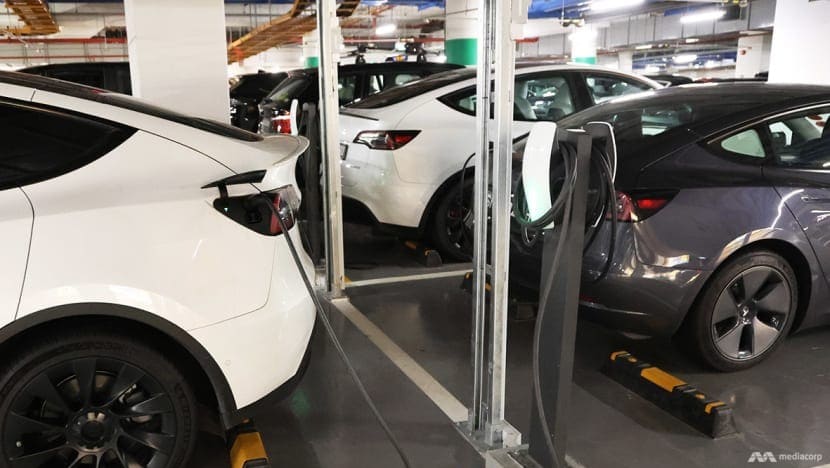
To that end, LTA and EMA stated that the possibility of smart charging is also being explored.
Possible solutions include the use of smart controllers, switches and algorithms to vary EV charging schedules, volumes and speeds, which reduces the impact on the power grid.
“Passive and active EV charger provisions” have been mandated for specified building and electrical works, to lower the cost of future retrofits associated with EV charging provision, LTA and EMA said.
Passive provisions refer to installing infrastructure, such as wiring, so chargers can be added later, while active provisions mean installing the EV charging points immediately.
And while the push to deploy more chargers is underway, EV charging companies said that they have an eye on future developments as well.
Charge+ chief executive officer Goh Chee Kiong said the firm takes a “future-ready approach” by continually evaluating new technologies and software innovations, while keeping its infrastructure flexible and scalable.
“This ensures we can integrate emerging solutions such as smart energy management without disruption,” said Mr Goh, whose firm has 4,000 charging points across Singapore.
Likewise, Mr Freddie Chew, general manager of ComfortDelGro ENGIE, said that the firm is “right-sizing” charger deployments to match the current and forecasted demand.
Doing so helps ensure charger efficiency and readiness to adopt the latest technologies as the firm, which currently has over 1,600 charging points in Singapore, scales.
“Over-deployment, on the other hand, can result in idle infrastructure that unnecessarily burdens the power grid,” said Mr Chew.
An LTA spokesperson said that it is “closely monitoring emerging clean energy solutions and remains open to facilitating other forms of charging technologies”.
“As these technologies become more commercially viable, we will work with industry and stakeholders to pilot and evaluate their potential for wider adoption.”
WHAT ABOUT CAR WORKSHOPS?
With the electrification of Singapore’s vehicle population, car workshops – most of which focus on ICE repairs – face the same uncertain future as gas stations.
Even as workshops look to pivot to EV repair, it was previously reported that there has been a shortage of skilled mechanics who understand the basics of EVs.
Associate Professor Raymond Ong said that the repairs for EVs are different from those of ICE vehicles, as each EV model requires a different set of skills to repair.
This means that EV distributors have direct partnerships with car workshops to get their technicians and engineers trained in repairing the specific vehicle models.
“This is going to render current workshop owners obsolete if they do not try to upskill or upgrade themselves or even get into a partnership with EV manufacturers,” said Assoc Prof Ong, who is the deputy head of research in the Department of Civil and Environmental Engineering at NUS.
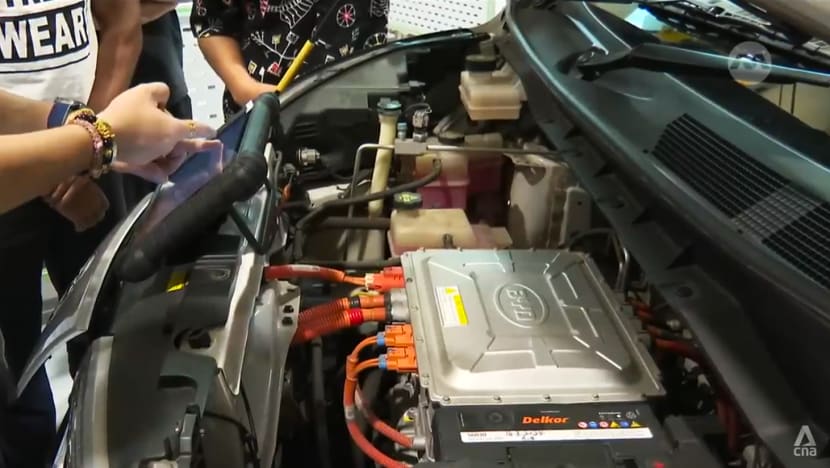
Echoing these concerns, Mr Joey Lim, president of the Singapore Motor Workshop Association (SMWA), said that work is underway to retrain the workforce to handle EVs.
However, the progress has been slow as there is a skills mismatch.
“Electrical engineering needs a lot more mathematics and physics calculations,” said Mr Lim.
He added that in general, EVs also have about 60 to 70 per cent fewer repair and maintenance tasks than ICE vehicles.
“So, if all the vehicles were to change to EV, then 60 to 70 per cent of the mechanical shops that handle engine, transmission and undercarriage repairs will have to close,” he said.
The upskilling of technicians to cater to the growing EV population is an important step in the technological transition, said the LTA spokesperson.
“We have been encouraging industry partners to prepare and equip a pool of technicians with the necessary skills to maintain this growing population of EVs,” the spokesperson said.
LTA said that existing automotive technicians can tap training programmes such as the National EV Specialist Safety certification that are recognised under the Singapore Workforce Skills Qualifications national credential system to “equip themselves with the fundamental knowledge on EV safety”.
“LTA will continue to work closely with our partners to grow the EV ecosystem and build a forward-looking land transport sector for Singapore.”
Not all workshop operations will be impacted, said Assoc Prof Theseira.
While the system that generates power to the car is new, he noted that mechanical repairs are largely the same between EVs and non-EVs.
“Thus, a significant part of the business, dealing with matters like suspensions, steering, brakes, lights, etc, is repairable with conventional existing skills,” he said.
CHANGE IN MINDSETS CRUCIAL
Even with infrastructure catching up to a growing EV population, the biggest hurdle may still be in changing the mindsets of how EVs are used, for such infrastructure to be effective.
For starters, the way EVs are charged should not be seen through the lens of how ICE vehicles are refuelled, the charging companies say.
“EVs offer the advantage of being charged in tandem with everyday routines,” said Charge+’s Mr Goh.
This could be in residential areas with overnight charging, at workplaces during office hours, or at commercial locations, such as shopping malls or eateries, where fast chargers enable quick top-ups while drivers run errands.
“Charging becomes a background activity, removing the need to plan journeys around fuel stops,” he said. “(It) requires a mindset change since existing conventional drivers are indeed used to the petrol station experience.”
Assoc Prof Theseira said that many non-EV owners still believe that an EV can and should be charged like an ICE car is refuelled.
“It’s always an issue for them that you cannot charge an EV to full in 5 minutes,” he said.
He reiterated that the closest alternative to quick refuelling is fast charging, but it is not a sustainable solution, costing more than a regular charger and also putting more strain on the power grid.
“They want many super high-power charging outlets and to have them always empty for them everywhere,” he said.
“It’s like asking for a petrol station to always be empty for them at every place they go … their imagination of the correct infrastructure is basically financially unsustainable.”
He said that the reality is that having more widespread lower-power charging points will be enough to match the demand, but it means a mindset shift that has to take place before 2040.
“Because, if they want to drive it exactly like ICE (cars), it is not possible to satisfy their preference with current technology, and likely not even with technology from the next 20 years,” he said.

















